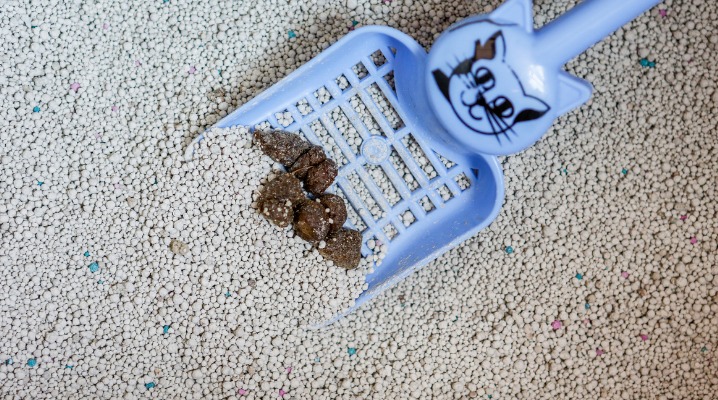
What Your Cat's Poop Can Tell You
It’s not always easy to tell how healthy your cat is. Cats are very good at masking pain and illness without showing any symptoms at all, meaning a health problem could go undetected for weeks or even months before it worsens. Fortunately, one way cat owners can get clued in to their furry friend’s health is by paying attention to its litter box.
Your cat’s poop can tell you a surprising amount about its health and can even give you early signs of gastrointestinal problems, nutritional deficiencies, worms or more. Next time you’re scooping out your cat’s litter box, pay attention to what you find.
What is “normal” for cat poop?
Cat poop won’t look completely the same for all cats, since diet and body chemistry can affect the color, size and consistency of stool. However, there are a few characteristics of cat poop that tend to be similar across the board.
Generally, cat poop should be dark brown in color, although it can be lighter depending on its diet. High fiber diets are known to produce lighter colored stools. However, very light stools may be indicative of liver disease.
Cat poop should also be firm—not too runny or hard—and be shaped in cylindrical logs, similar to a Tootsie Roll.
Although no feces smells pleasant, your cat’s poop shouldn’t have an extremely pungent odor—especially if the odor is abnormal compared to most of its stools.
Most cats will defecate once a day, However, this can fluctuate, so don’t worry too much if a short period of time has passed without you seeing poop in the litter box. If you notice your cat hasn’t pooped in two days, you contact the vet.
What’s most important is that you get to know what is normal for your cat. Sudden changes in the color, consistency, shape and smell of your cat’s feces are more likely to indicate a problem. Understand what is “normal” for your cat and watch out for deviations from it over time.

Problems with poop
Of course, cats are susceptible to the occasional gastrointestinal problem, so you may notice an abnormal stool every so often. Many characteristics of abnormal stools can indicate an underlying health problem.
The following are some of the most common problems with cat poop and what they could mean.
- Diarrhea: Runny or too-soft stools are considered diarrhea. Unfortunately, diarrhea is relatively common in cats and can have a wide range of underlying causes. Stress, including changes in routine or household, can cause the occasional bout of diarrhea, as can a rapid change in diet. However, diarrhea can also be caused by parasitic worms, inflammatory bowel disease (IBD), pancreatic disease and even cancer. If your cat’s diarrhea lasts for longer than a day, contact your vet, since weight loss and dehydration may be concerns.
- Hard stool: On the other hand, stool that is too firm—usually presenting as small, hard balls, may indicate that your cat is constipated. This is often caused by dehydration, so make sure your cat is drinking enough water. It can also be caused by things like kidney disease, which is much more serious.
- Blood: If you see red blood in your cat’s stool, this can indicate a very serious problem that requires immediate attention. Fresh blood generally stems from a wound or problem with the lower intestinal tract.
- Black appearance: If your cat’s stool looks black or is covered in a tar-like substance, this is usually blood that has come from higher in the intestinal tract. This can also be serious and should result in an immediate call to your vet.
- Mucus: If you notice a yellow or green, slimy texture on your cat’s feces, it is likely mucus. Mucus-covered stools are abnormal and may be caused by colitis (inflammation of the colon) or another gastrointestinal problem.
- Worms: The only intestinal parasites that are typically seen in feces are tapeworms, which usually look like small pieces of white rice. These small flecks may even be moving. Other parasites are usually too small to be seen by the naked eye. If you notice these white flakes, collect a sample and visit your vet as soon as possible to have your cat treated for parasites.
- Hair: Some hair present in the stool is normal, since the hair your cat swallows while grooming gets passed through the digestive tract. However, if there is a lot more hair than usual, your cat might be overgrooming due to a skin issue or stress. You should monitor its behavior closely to identify the problem.
If something in your cat’s litter box looks amiss, take note of what it looks like and keep an eye on your cat for the next few days (unless there is blood, which requires immediate attention!). If the problem persists or gets worse, you’ll want to call your vet to make an appointment and prepare a sample for them to test.
If you take fast action, your cat’s poop may help you identify and treat health problems before they worsen, so your cat can continue to be happy and healthy!


